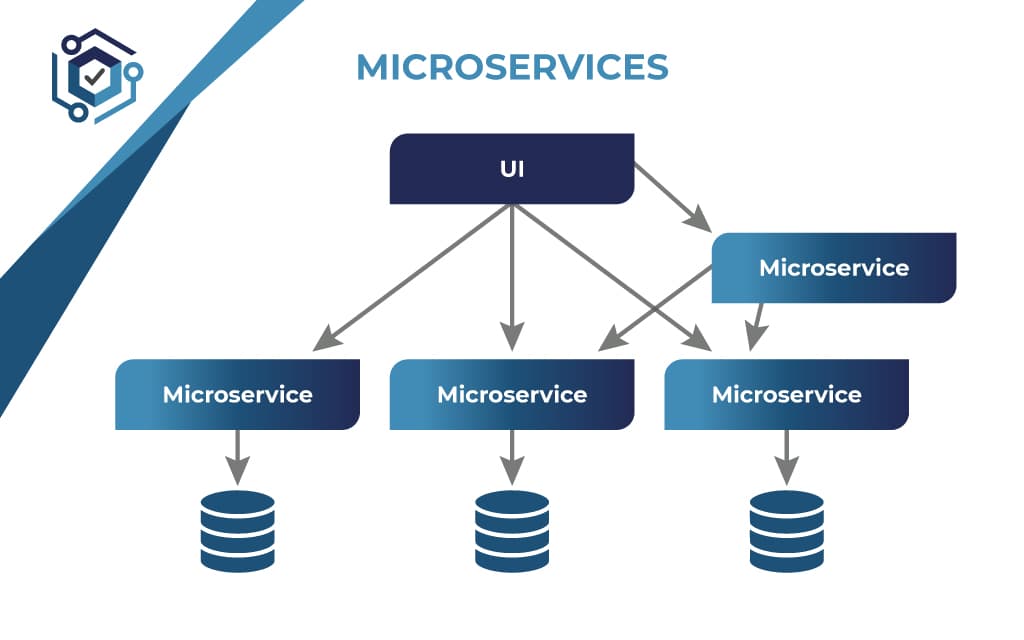Microservices Architecture: Building Resilient, Scalable Applications in the Cloud Era
Introduction
In recent years, the shift from monolithic to microservices architecture has transformed how modern software is built, deployed, and maintained. Microservices architecture divides applications into independent, loosely coupled services, each responsible for a specific function. This approach enables organizations to build scalable, fault-tolerant systems, where individual services can be developed, deployed, and scaled independently. Companies like Netflix, Amazon, and Google have popularized microservices, proving its advantages for handling high-volume, complex applications. In this article, we explore the benefits, challenges, and best practices of adopting microservices architecture.

What Is Microservices Architecture?
Microservices architecture is a design pattern that structures an application as a collection of services, each with its own logic and database, deployed independently. These services communicate through lightweight protocols, typically HTTP/HTTPS or message brokers, and together form a cohesive application.
Unlike monolithic applications—where all functionality is tightly integrated within a single codebase—microservices allow each service to function independently, making it easier to scale, update, and maintain specific parts of the application without impacting the entire system.
Benefits of Microservices Architecture
Microservices offer several advantages over traditional monolithic architectures:
- Scalability: With microservices, each service can be scaled independently based on its specific resource requirements. For example, a high-traffic user authentication service can scale separately from a less intensive service, such as reporting. This approach provides cost-efficiency and adaptability to fluctuating loads.
- Fault Isolation: In a microservices environment, failures in one service typically do not affect other services. This design increases the system’s resilience, as issues are isolated to individual services. If a particular service fails, the system remains operational, minimizing downtime.
- Faster Development and Deployment: Microservices allow teams to work on different services simultaneously without waiting on other teams. This structure speeds up development cycles and enables continuous integration and delivery (CI/CD), allowing features to be deployed faster and independently.
- Technology Diversity: Microservices allow teams to choose the best technology for each service. For example, a team might use Python for data processing, Node.js for API services, and Java for high-performance applications, creating flexibility to leverage the best tool for each job.
- Improved Maintenance and Modularity: Breaking down applications into smaller services improves code modularity, making it easier to maintain and update individual components. Each service can be managed, tested, and debugged independently, improving productivity and code quality.
Similarly, continuous integration and continuous deployment (CI/CD) pipelines have become far more automated thanks to advances in AI. These pipelines can now automatically trigger builds, run tests, and deploy code without human intervention, drastically reducing the time between writing a feature and getting it into the hands of users. Automation ensures faster releases, fewer bugs in production, and greater flexibility to iterate quickly based on user feedback.

Real-World Examples of Microservices
Many leading tech companies have successfully implemented microservices to power their applications and services:
- Netflix: Faced with exponential user growth and a need for high availability, Netflix shifted to microservices to improve resilience and scalability. Today, Netflix’s platform comprises hundreds of microservices, each managing a specific function, from streaming to recommendations.
- Amazon: Amazon adopted microservices to handle its enormous ecommerce infrastructure. Each part of Amazon’s system—order management, payments, shipping, inventory—is powered by dedicated microservices, allowing Amazon to scale and operate independently across geographies.
- Uber: Uber’s shift to microservices enabled it to manage its rapid expansion across regions and services. Microservices have allowed Uber to operate localized services like ride-hailing, UberEats, and payments while maintaining efficiency and reliability at scale.
Challenges of Microservices Architecture
Despite its advantages, microservices architecture comes with its own set of challenges:
- Complexity: Managing multiple services requires robust infrastructure and monitoring tools. Distributed systems are inherently more complex, requiring careful orchestration and communication management.
- Data Consistency: In a microservices environment, data is often distributed across multiple databases, making it challenging to maintain consistency. Strategies such as eventual consistency and distributed transactions are often required to synchronize data across services.
- Inter-Service Communication: Microservices rely heavily on inter-service communication. Slow or unreliable network connections can lead to latency and potential failures. Solutions like message brokers (e.g., Kafka) and circuit breakers can help manage these issues, but they add complexity.
- Monitoring and Debugging: Monitoring becomes critical when dealing with many interconnected services. Identifying and diagnosing failures in a distributed system requires sophisticated logging, monitoring, and alerting tools like Prometheus, Grafana, and Jaeger.
- Deployment and DevOps Overhead: Microservices require well-defined CI/CD pipelines for each service, which can increase DevOps efforts and deployment costs. Containerization (e.g., Docker) and orchestration (e.g., Kubernetes) help manage deployment but require additional expertise.
Best Practices for Adopting Microservices
To successfully implement microservices, organizations should consider the following best practices:
- Define Service Boundaries: Identify clear boundaries for each service. A service should represent a single business capability (e.g., user authentication, billing) to maintain focus and reduce interdependencies.
- Implement API Gateways: An API gateway manages communication between clients and microservices, acting as a unified entry point. It can handle requests, manage routing, and apply security measures, simplifying interaction for users and developers.
- Use Containers and Orchestration: Containers (Docker) and orchestration platforms (Kubernetes) are essential for managing multiple services in production. They provide consistency, scalability, and fault tolerance across services.
- Set Up Robust Monitoring and Logging: Implement comprehensive monitoring and logging to track the health of each service. Distributed tracing tools like Jaeger help identify performance issues, while monitoring platforms (Prometheus, Grafana) provide real-time insights.
- Prioritize Security: With multiple entry points, security becomes paramount. Use authentication and authorization mechanisms (OAuth, JWT), secure communication channels (HTTPS), and role-based access controls to safeguard each service.
Is Microservices Right for Your Organization?
While microservices offer substantial benefits, they may not be suitable for all organizations. For smaller teams or less complex applications, a monolithic approach might be easier to develop and maintain. However, for organizations with high-growth applications or complex systems, microservices can provide the scalability and resilience required to meet evolving demands.
Assessing factors like team size, budget, application complexity, and future scalability needs can help determine if microservices are the right choice.
Conclusion
Microservices architecture has redefined how modern software systems are designed and operated. By breaking down monolithic applications into smaller, specialized services, organizations can achieve greater flexibility, scalability, and resilience. However, the shift to microservices requires careful planning, robust infrastructure, and a commitment to continuous monitoring and improvement.
For companies navigating rapid growth or managing complex systems, microservices offer a proven path to high-performance, fault-tolerant applications. By embracing microservices, businesses can stay agile, innovate faster, and deliver exceptional experiences that meet the demands of today’s users.